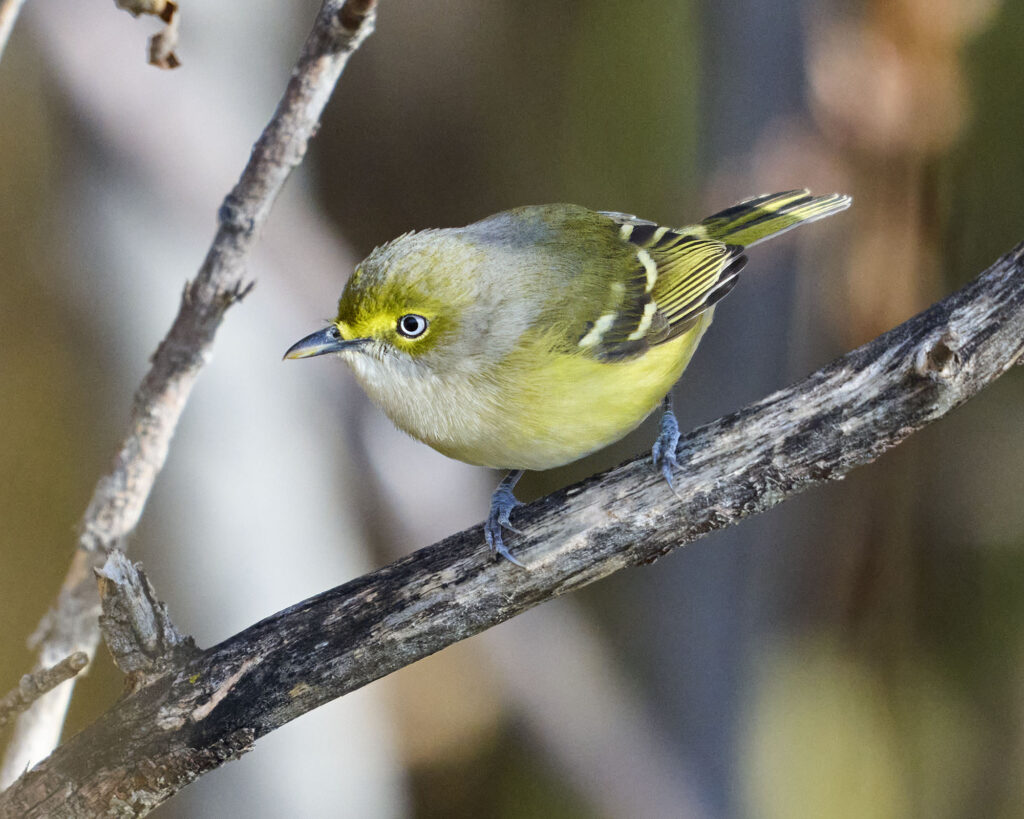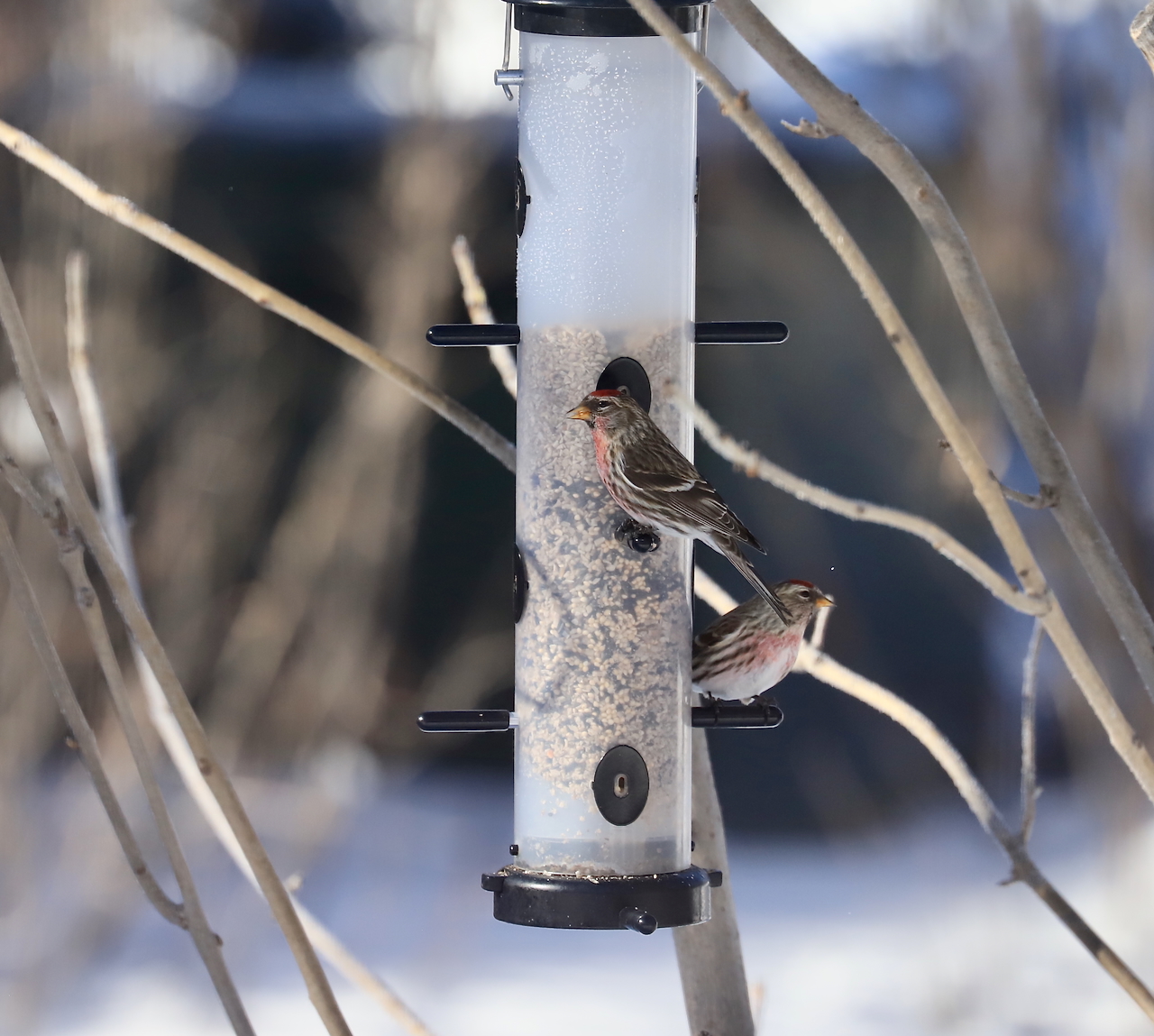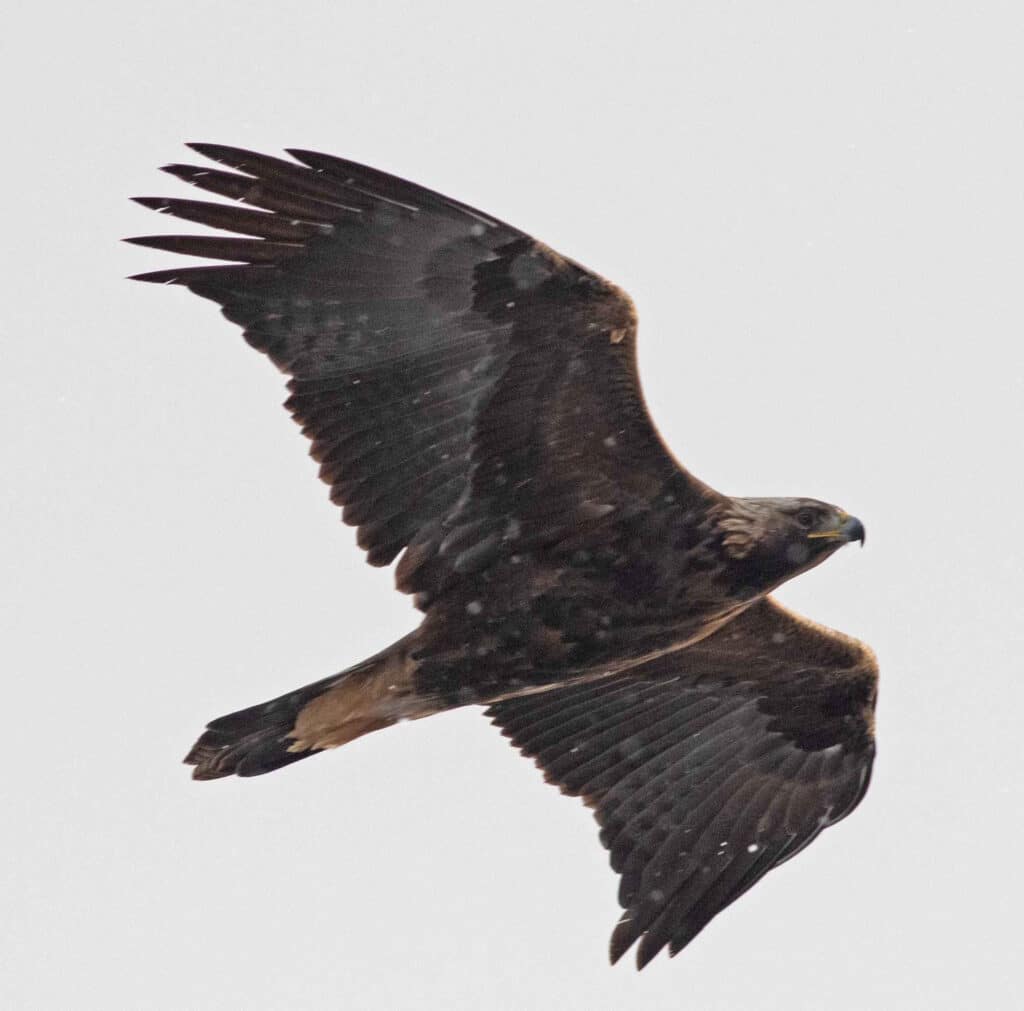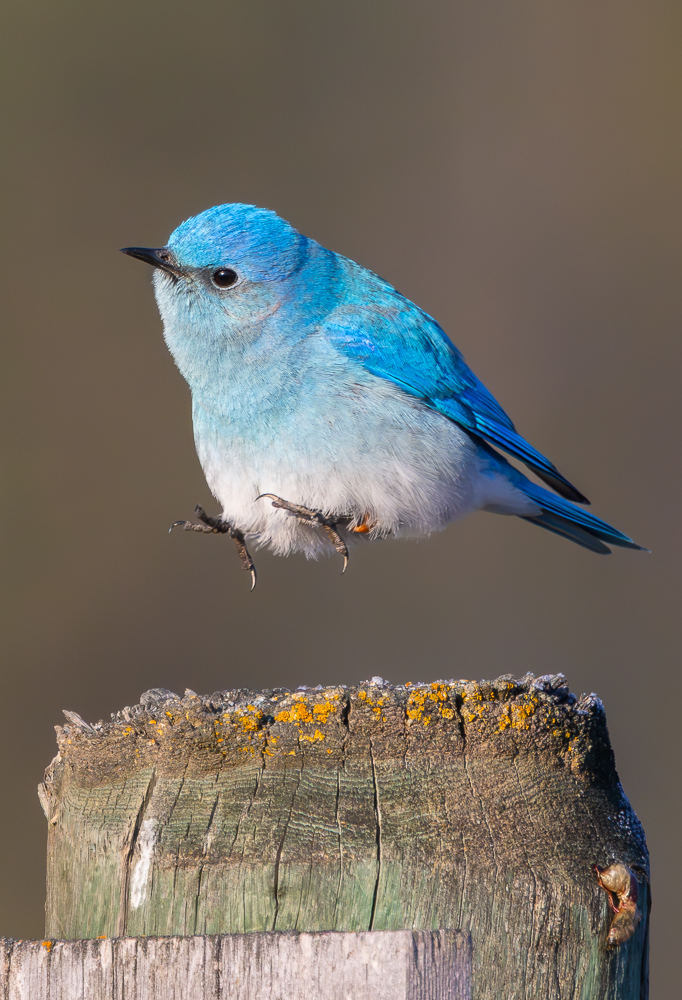by John Parker
With the mild weather continuing well into November, it has been an interesting fall migration with a number of unusual birds moving through this area. I can’t recall another time when there were so many uncommon or rare birds in such a short time. Meanwhile many of the expected birds, such as waterfowl, were slow to arrive from the north.
During this period, the first bird of note was the Red-throated Loon that the October 18 Sacajawea Audubon Ennis Lake field trip participants spotted on their arrival at the Meadow Lake fishing access. With Ennis Lake being one of the premier staging areas for Common Loon in Western Montana, it’s also arguably the best spot to search for other not so common loons. This same group also found 2 Say’s Phoebes along the north shore of Ennis Lake. Hands down, this is the latest fall record for Say’s Phoebe in our area of Montana.
Meanwhile, on that same day Mary Keck discovered a Northern Parula in her north Bozeman yard. This warbler did not stray too far from its favorite birch tree during the three days it was in the neighborhood, giving many others the chance to see a bird that has only been seen about thirty previous times in Montana. Incredibly, a second Northern Parula was spotted by Paulette Epple in Mike and Stephanie Becker’s yard near Harrison on November 12th, making it the latest fall record for Montana. Not as rare but still a nice find locally, was the Tennessee Warbler Lou Ann Harris had staying in her northwest Bozeman yard from October 29th till November 2nd.
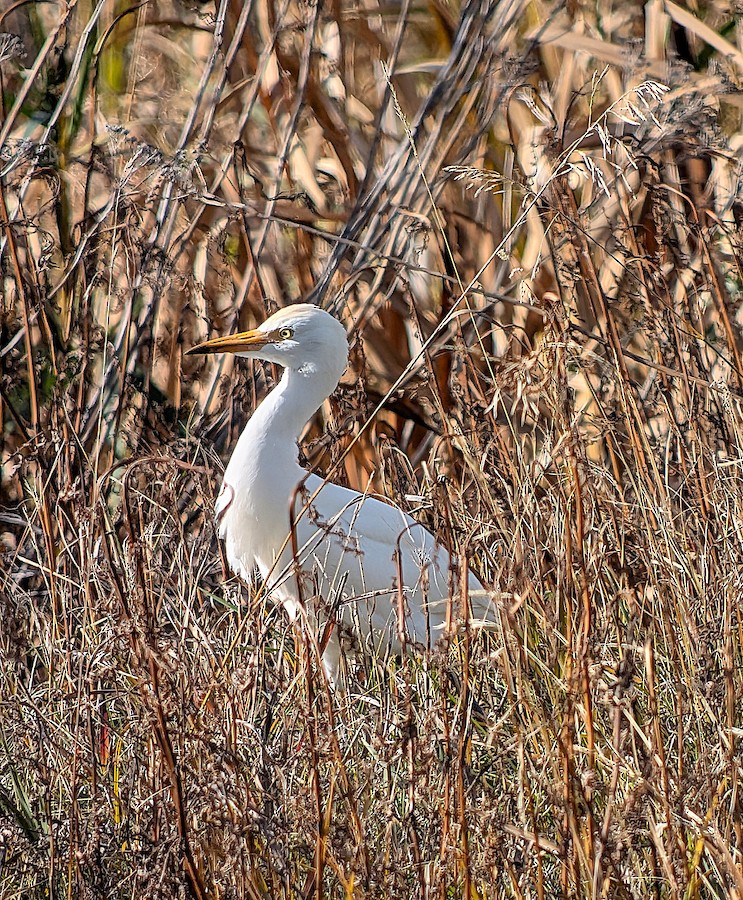
Lou Ann also discovered the nearly famous Cattle Egret sometimes known as “Carl”, on October 21st in the field just west of the Bozeman Post Office on Baxter Lane. This egret stayed in the same vicinity for almost three weeks, foraging along a short strip of the North 19th Street corridor. Long staying and highly visible, the egret was possible to observe at length and see what opportunistic feeders Cattle Egret are (several people saw it eat voles, along with numerous invertebrates). Being one of the world’s most adaptable birds, Cattle Egrets are remarkable for their amazing range expansion over the last 150 years. Originally a southwest Asian species, it now inhabits every continent except for Antarctica. Cattle Egrets first reached the western hemisphere in the late 1800’s, North America by the 1950’s, and Montana in 1974. This particular bird is Gallatin County’s second record.
And the wonders kept coming. On October 26th, while walking his dog in the northwestern corner of Three Forks, Josiah Kiehl discovered a Scissor-tailed Flycatcher. The core range of this spectacular flycatcher is in Texas and Oklahoma, though they are somewhat prone to wandering. This was the Scissor-tailed Flycatcher’s first appearance in Gallatin County, though another one was seen less than two miles away across the Jefferson River in Broadwater Co. in 2001. In 2020 another Scissor-tailed Flycatcher was seen along Brackett Creek Road in Park Co.
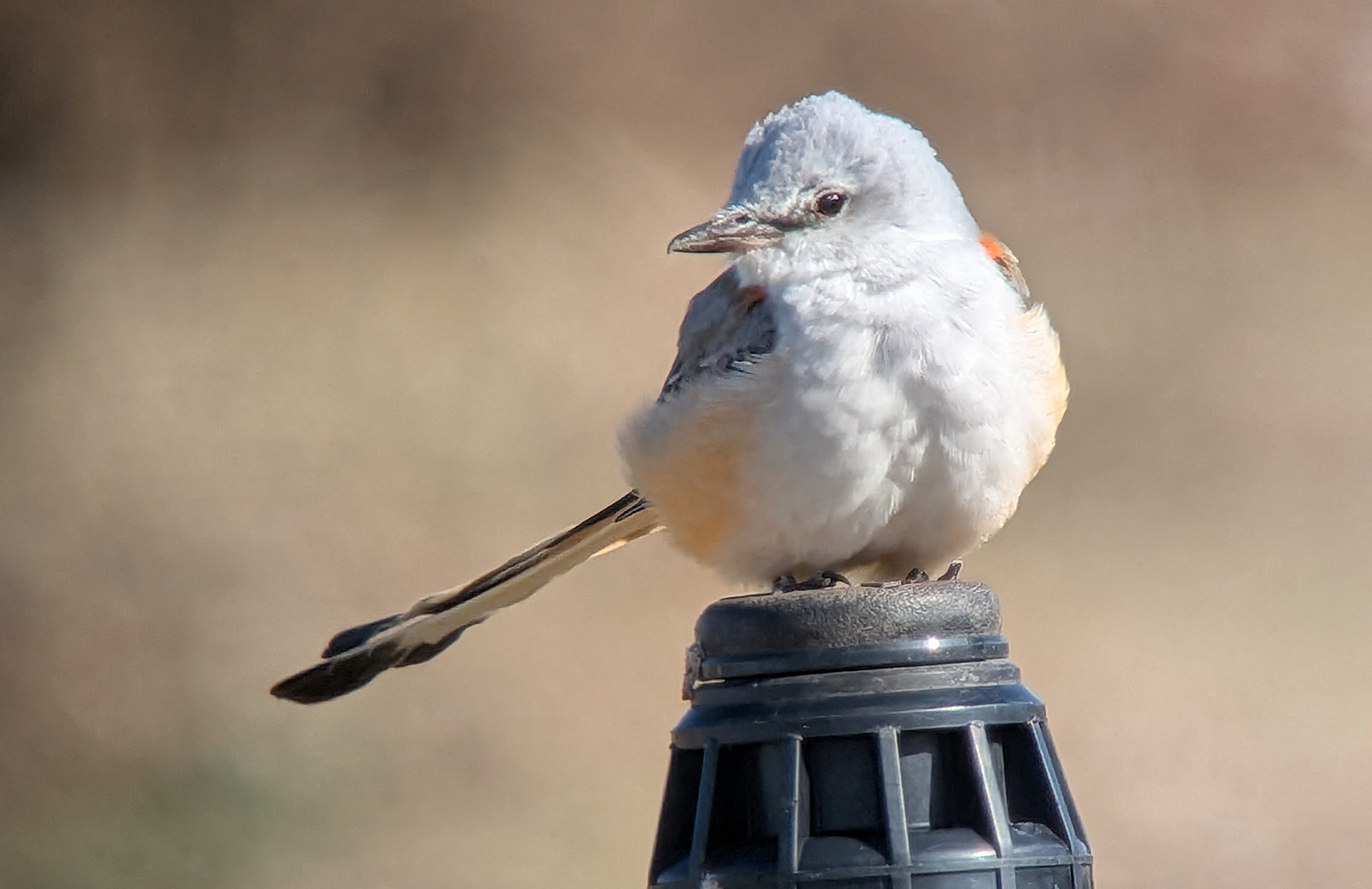
Rounding out this fall’s surprises, was a White-eyed Vireo that John Parker found foraging in the willows next to Cattail Pond in northwest Bozeman, on October 31st. This cooperative vireo, often within 10-15 feet of the sidewalk was last seen the morning of November 2nd. The White-eyed Vireo is not especially known for vagrancy, and this wanderer was only the fifth Montana state record. Not an uncommon bird in the south and eastern parts of the U.S., by this time of year it should have been well on its way to its wintering grounds in the region around the Gulf of Mexico and the Caribbean Basin.
